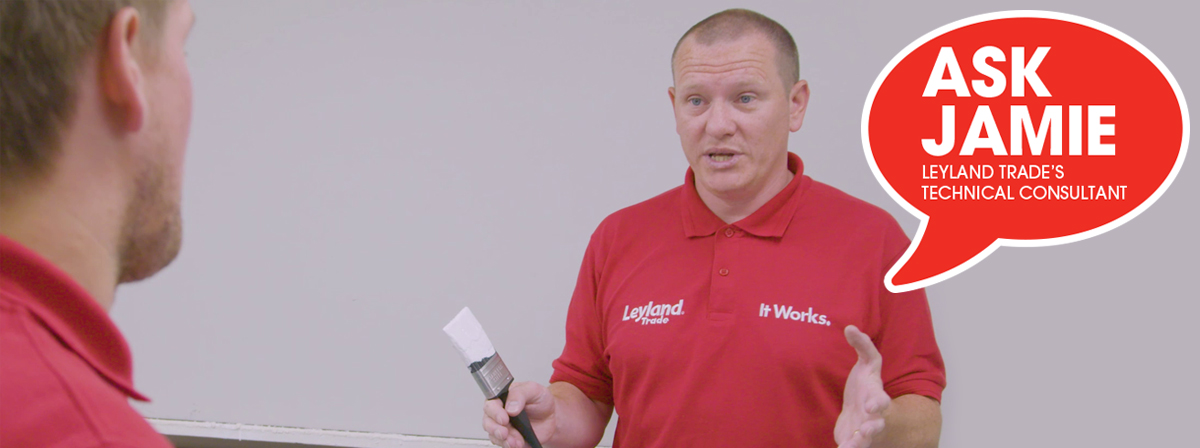Paint spraying guide
Jamie's guide to spraying
Throughout Leyland's product information and packaging, reference is made to suitable application methods. In addition to application by brush and/or roller many Leyland products can be applied by spraying. The benefits of spray application include a pristine finish in little time.
There are basically two methods of spraying, conventional or air spray and ‘airless’ spray. The former is perhaps the most well-known and utilises compressed air to atomise the paint via an air spray gun. Although the finish obtained with most paints is good, the method is somewhat slow and wasteful of materials. It is most effective on complicated items such as old style cast-iron radiators and louvre doors. The equipment used consists of an air compressor (minimum output 4 cu. ft/min at 40 psi), a pressurised container, hoses and an air spray gun.
The method of spraying known as the ‘airless’ system has now been in use in this country for many years and, therefore, should be familiar to most decorating firms and maintenance painters. The speed of operation is up to 200 square metres per hour. Many Leyland products can be applied by airless spray, which uses a pump to force paint at high pressure to a spray gun and through a suitable nozzle or tip.
Conventional spray - Leyland products indicated as suitable for application by spray or conventional spray can be applied by this method as follows:
-
Water-borne products - For conventional spray application, most water-borne products will require thinning up to a maximum of 10% with clean water to produce best results. Use a normal type pressure container with approximately 25-40 psi fluid pressure, an air spray gun with a 1.8 or 2.5mm diameter nozzle and a suitable air cap with 25-60 psi air pressure.
-
Solvent-borne products - For Health and Safety reasons we do not recommend the spray application of solvent-borne paints.
Airless spray - Leyland products indicated as suitable for application by spray or airless spray can be applied by this method as follows:
-
Use tip sizes and fluid pressures as indicated.
-
Spray pattern widths should be between 6" (15cms) and 12" (30cms).
-
The airless spray unit should be capable of delivering a minimum of 750ml per minute.
-
Thoroughly mix all products before use and if ambient temperatures dictate, thin up to 5% with clean water.

For advice on airless spray application of products other than those listed, please contact Technical Advisory, on 01924 354 354.


